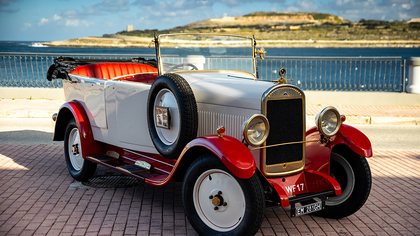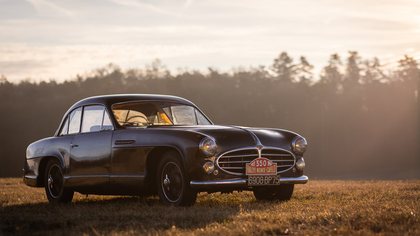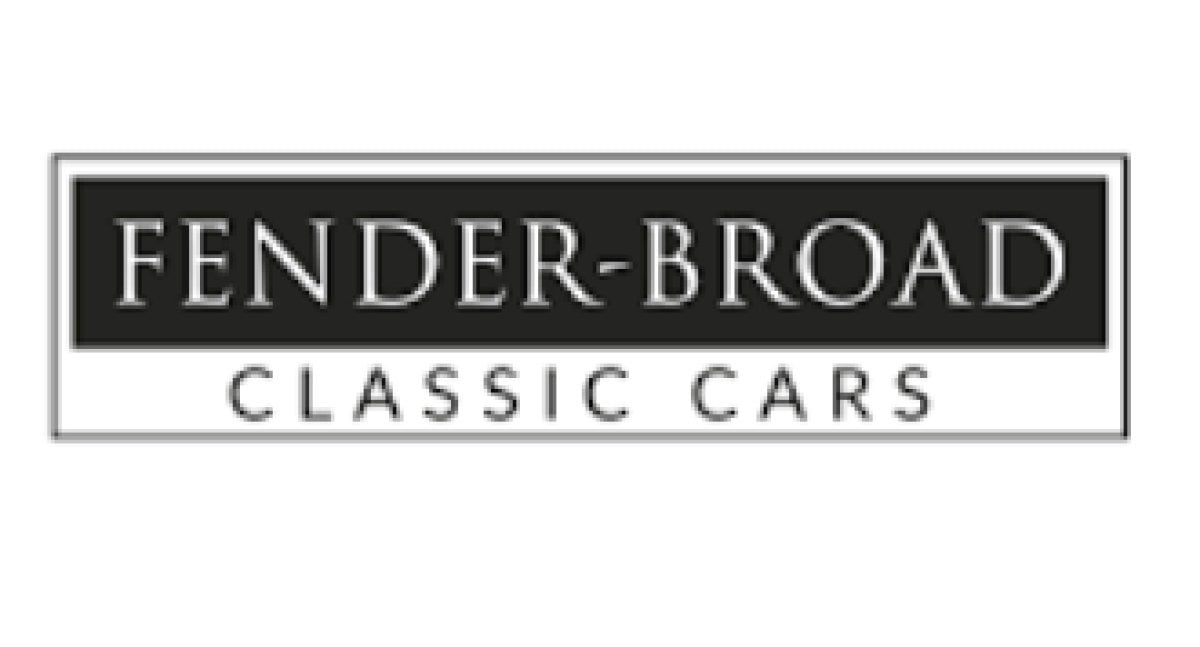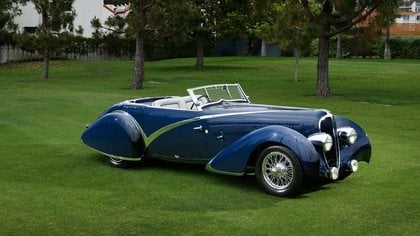Description
In 1894, Emile Delahaye, an engineer from Arts et Métiers born in Tours, built his first car using a combustion engine he had created for navigation. A pioneer of the French car, his car was 100% French, while Peugeot and Panhard & Levassor used engines that were also made in France, but under the German licence of Daimler. In 1898, he joined forces with two Parisian industrialists who relocated production to Paris. The elegant lines of Delahaye cars, renowned worldwide, were designed by the great coachbuilders of the time and mounted on the company's in-house engine-chassis units.
In 1905, Emile Delahaye died, but the brand continued its meteoric rise thanks to a prestigious clientele hungry for luxury cars! At the same time, it developed top-of-the-range fire-fighting equipment and vehicles, notably fire engines. Delahaye built up a solid reputation in this field, but it was probably the 135 that took the brand to the highest level. This prestigious GT, born in 1935, shone as much on the road as on the track, winning the 24 Hours of Le Mans in 1938. Emile Delahaye, the brand's founder, raced his cars to prove to France and the rest of the world the value of his vehicles. After the Second World War, another chassis model, the 175, won the ACF Grand Prix at Comminges in 1949 and then the Monte Carlo Rally in 1951, but was not a great success with wealthy customers.
In 1954, Société des Automobiles Hotchkiss bought the Delahaye brand for a merger, but it in turn ceased to manufacture touring cars in 1955.
The Delahaye 235 would be the firm's last model...
During the 1930s, France still had a number of prestigious car brands. A few years and a world war later, the situation was no longer the same. Delahaye, one of these prestigious marques, had to turn around a particularly unfavourable situation. To do this, Delahaye's management embarked on two very different projects: the development of a Véhicule Léger de Reconnaissance (VLR) to replace the French army's Jeeps, and the launch of a new luxury model, the Type 235.
At the end of the Second World War, Delahaye had to content itself with relaunching its Type 135 model in an attempt to regain its financial health. This car, launched in 1935, was showing the effects of the passage of time and was built in the old-fashioned, artisanal way: Delahaye only produced the chassis and mechanical parts, while external coachbuilders were responsible for dressing the car according to the wishes of a wealthy clientele. The Pons plan, which organised the car industry during this period of reconstruction, maintained Delahaye's production of prestige cars, as well as its production of trucks for the fire brigade in particular, enabling the company to survive.
Indeed, the immediate post-war period was not a very favourable time for the production of luxury cars: rationing was still in force, the economic situation was catastrophic and traditional customers had either seen their incomes fall drastically or decided to postpone buying such vehicles. As a result, production fell to 511 cars in 1949, despite the launch of the 175, an evolution of the 135.
It was in this situation that Delahaye decided, in order to diversify its activities and survive, to respond to the French army's call for tenders for the VLR.
Despite this, the manufacturer did not abandon the luxury market, but its limited resources were allocated to developing the small military off-roader rather than a new car: it was therefore necessary to make something new out of something old. As much as Delahaye was looking for innovative solutions for the VLR, it remained faithful to technical solutions from another age for its future Type 235: in reality, it was derived from the Type 135 with a heavy antediluvian chassis (1, 100 kg), as was its engine, an evolution of the in-house 3, 557 cc 6-cylinder engine with a new cylinder head and 3 double-body carburettors, developing 152 horsepower instead of 130. The brakes were controlled by cable.
Another old-fashioned practice was right-hand drive, the preserve of pre-war luxury cars, but a practice that had fallen out of fashion with most manufacturers. Finally, the brand remained faithful to the traditional bodywork to which it supplied the chassis. However, the Type 235 was still a relatively powerful car, with a top speed in excess of 180 km/ h. Although the bodywork was produced by external coachbuilders, Delahaye decided to unify the styling by commissioning Philippe Charbonneaux to design a modern front grille and front end for the 235.
The first prototype of the 235, which was also the demonstration vehicle for the motoring press, was produced in 1951. Although the design was by Charbonneaux, its production was entrusted to Carrozzeria Motto in Italy. The bodywork was in aluminium, and the finish was very light because it was produced in record time. The first production vehicle was built by the French coachbuilder Letourneur et Marchand, again in a 'coach' version. From then on, the coachbuilders varied according to the customer's wishes: Chapron (the majority of models, he was the first to offer a cabriolet), Faget, Varnet, Saoutchik, Barou, Beutler, Antem and Figoni.
Of the confidential production run of 84/ 85 examples of the Delahaye 235, started for the 1951 Paris Motor Show and the last model marketed by the prestigious marque, the most emblematic model of this series remains the coach bodied by Henri Chapron. Two versions were offered: the 'factory' coach and the 'luxury' coach.
Each model was finished in a different way, according to the customer's choice. This final model was powered by the Type 22 S 103, a 3. 5-litre 6-cylinder engine with 152 bhp. It was also fitted with MESSIER front suspension with hydraulic dampers, all of which contributed to the car's performance, good roadholding and great comfort for long, fast journeys.
Chassis 818069 was produced by Delahaye during 1953 and appeared in the design department's inventory on 3 October of that year at a cost of 2, 000, 000 francs. It was bodied as a 'factory' coach by Henri Chapron, under the number 7030.
This luxury car was registered new in Seine et Oise on 4 April 1955, in the name of an engineer from Montmorency, under number 94 BJ 78; the number plate was changed to 382 ER 14 on 25 September 1958, in favour of Paul Dahl, electrical and mechanical engineering firm in Lisieux. In September 1962, it became the property of the Paris garage Le Marois, a Delahaye specialist, who sold it on 8 May 1963 to a yachtsman living in Maison-Alfort. In 1987, the coach was registered in the Hauts-de-Seine department, until it was sold at auction by Poulain-Le Fur on 15 December 2002. The car was described as having undergone a mechanical overhaul in 1981. It then joined a major collection in Rome, before moving to southern Spain and eventually was sold in 2020 to its current owner.
Today, our coach is in an exceptional state of preservation. Its elegant grey bodywork blends perfectly with a red leather interior bearing the marks of its past. Our Delahaye 235 will delight enthusiasts of cars that have retained their period soul. It has an inimitable patina and ambience that no restoration can replicate. Its driving qualities, on the other hand, are very contemporary. The car is in irreproachable mechanical condition and is ideal for long quiet journeys.














